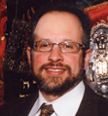 View current news articles, commentary, videos and more that have an impact on Jewish culture, politics and religion at Rabbi Silverman's Sites to See
View current news articles, commentary, videos and more that have an impact on Jewish culture, politics and religion at Rabbi Silverman's Sites to See
ברכת כהנים THE PRIESTLY BLESSING
One of the most beautiful customs of our shul, not common for Conservative shuls, is Duchaning (in Yiddish, Duchanen), which we do in the Musaf service for Rosh Hashanah and Yom Kippur. If you haven’t experienced this lovely ceremony performed by our Kohanim (Kohens), I encourage you to stay through Musaf to do so. There is a special melody in this ceremony in which the Kohanim repeat the words of the Blessing of Aaron, the High Priest, from the book of Numbers (Yevarecha). We uniquely adapt the tune to melodic lines on Rosh Hashanah evening, and the antiphonal response, led by the Cantor, is quite haunting and joyful.
Why do we Duchan? Numbers, Chapter 6, instructs Aaron and his sons to bless the Israelites with the verse “Bless you, guard you…May Hashem lift His face to you and be gracious to you…May Hashem give you peace…” Since every Kohen is a descendant of Aaron, they are to repeat the blessing for every congregation of ten. Kohanim count as a part of the 10 congregants in the minyan that they are blessing. If a minyan dissolves while they bless the congregation, they continue and conclude it. If the Chazzan is the only Kohen, he is allowed to move from his stand on the bima and face the congregation to bless them. During the repetition, he must wash and remove his shoes before beginning the standing devotion. If he is not the only Kohen, he remains in his place.
Why is this custom of blessing the people called duchening? Because the word for bima, or raised platform, in Aramaic is Duchan. The Kohanim ascend the platform as a mediating symbol between the congregation and the Holy Ark. At this moment, they are a conduit for blessing. The Kohen raises his hands and spreads his fingers in a “V” shape. His hands, therefore, form two Shins (Hebrew letter ש), which equals 600. His fingers are ten and his blessings are three, which equal 613–the number of mitzvoth in the Torah. Talmud Hagigah mentions that one should not look at the fingers of the Kohen as they bless, as doing so will “weaken the eyes.” Probably this was so the Kohen, in feeling one’s gaze, would not become distracted. It is not correct, however, to turn around, as many do, and show their backs to the Kohanim as they bless us. Many rabbinic authorities label this a “superstitious custom.” It is far better to face them and simply look downward or place one’s head under one’s own tallit as one receives the blessing.
How many times a year is it customary to do the Kohen blessing with Duchenen? In traditional congregations of the Diaspora (outside of the land of Israel), it should be done on Yom Tovim only (the five major holidays.) In the Ashkenazic congregation of Safed, Israel, it is done on major holidays and each Shabbat, and so, too, in many Ashkenazic congregations outside of Jerusalem. Sfardic synagogues in all of Israel do it every day. Many liberal congregations have discontinued it, considering it a vestige of the past and attached to sacrificial rituals.
There are some interesting facts of Duchening. We take our shoes off, not because the High Priest came in bare feet for the Yom Kippur ceremony, but because the Shulchan Aruch determined that a shoe lace untied can cause a fall, or an effort to tie an untied shoe lace nullifies the hand washing. This would prevent the shoe lace handler from saying the blessing, causing people to think him impure. To avoid this, it was decided that all would take off their shoes before blessing the congregation. A Kohen who doesn’t wish to say the blessing, perhaps because he dislikes someone in the congregation, should get over it! If a Kohen is impure after being in a cemetery, he should intentionally remove himself before the Kohanim begin to ascend the bima.
My hope is that this year more of us attend Musaf with our new Chazzan so that they can experience this special ritual performed so enthusiastically by our congregation’s Kohanim. If you are a Kohen and wish to participate, please contact me at 631-741-5344. I will be happy to show you what’s involved.
Beth and I welcome warmly our new Chazzan Mondrow. I look forward to sharing our bima with him Yamim Noraim and beyond, for many years to come. And of course, we wish you and yours a shana tova oometuk. May you and your family be inscribed for a sweet year of health, success and spiritual meaning. שנה טובה
